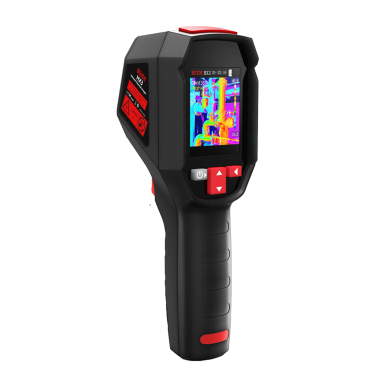
# Ear Thermometers: Accurate and Non-Invasive Temperature Measurement
## Introduction to Ear Thermometers
Ear thermometers, also known as tympanic thermometers, have become increasingly popular in both clinical and home settings for measuring body temperature. These devices offer a quick, accurate, and non-invasive way to monitor temperature, making them particularly useful for children and adults alike.
## How Ear Thermometers Work
Ear thermometers use infrared technology to measure the temperature inside the ear canal. The device detects the infrared heat emitted by the eardrum and surrounding tissue, converting this measurement into a temperature reading. This method is based on the principle that the eardrum shares blood supply with the hypothalamus, the body’s temperature control center, making it an excellent indicator of core body temperature.
### Key Features of Modern Ear Thermometers
– Fast readings (typically 1-3 seconds)
– Non-invasive and comfortable
– Hygienic with disposable probe covers
– Memory function to track temperature trends
– Backlit displays for easy reading in low light
## Advantages of Using Ear Thermometers
Ear thermometers offer several benefits over traditional methods of temperature measurement:
### Accuracy and Reliability
When used correctly, ear thermometers provide highly accurate readings that correlate well with core body temperature. Studies have shown they can be more reliable than oral or axillary (underarm) measurements, especially in clinical settings.
### Ease of Use
These devices are particularly useful for parents with young children, as they can take a temperature reading quickly without causing discomfort. The process is much simpler than trying to keep a thermometer under a child’s tongue or in their armpit for an extended period.
### Safety Considerations
Ear thermometers are safe for all ages when used according to manufacturer instructions. However, they may not be suitable for individuals with ear infections or excessive earwax buildup, as these conditions can affect accuracy.
## Proper Usage Techniques
To ensure accurate readings with an ear thermometer:
1. Gently pull the ear upward and backward (for adults) or straight back (for children) to straighten the ear canal
2. Insert the probe snugly into the ear canal
3. Press the measurement button and hold steady until the reading is complete
4. Wait at least 15 minutes after coming in from cold temperatures before measuring
5. Avoid taking measurements immediately after bathing or swimming
## Comparing Ear Thermometers to Other Types
Keyword: Ear Thermometers
While ear thermometers offer many advantages, it’s important to understand how they compare to other temperature measurement methods:
### Versus Oral Thermometers
Ear thermometers provide faster results and are more convenient for children who may have trouble keeping a thermometer under their tongue. However, oral thermometers may be preferred in some clinical situations where precise comparisons to baseline temperatures are needed.
### Versus Forehead Thermometers
Forehead thermometers are even more non-invasive but may be slightly less accurate than ear models. Ear thermometers typically provide more consistent results as they measure closer to the body’s core temperature.
### Versus Rectal Thermometers
While rectal measurements are considered the gold standard for infants, ear thermometers offer a much more comfortable alternative with nearly comparable accuracy when used properly.
## Choosing the Right Ear Thermometer
When selecting an ear thermometer, consider these factors:
– Clinical-grade vs. consumer models
– Speed of measurement
– Memory capacity
– Display readability
– Warranty and customer support
– Availability of replacement probe covers
## Maintenance and Care
Proper maintenance ensures your ear thermometer remains accurate:
– Clean the probe tip according to manufacturer instructions
– Store in a protective case when not in use
– Replace batteries as needed
– Use disposable probe covers for hygiene
– Avoid exposing to extreme temperatures or moisture
## Conclusion
Ear thermometers represent a significant advancement in temperature measurement technology, offering accuracy comparable to more invasive methods while being significantly more comfortable and convenient. Whether for home use with children or in professional healthcare settings, these devices provide